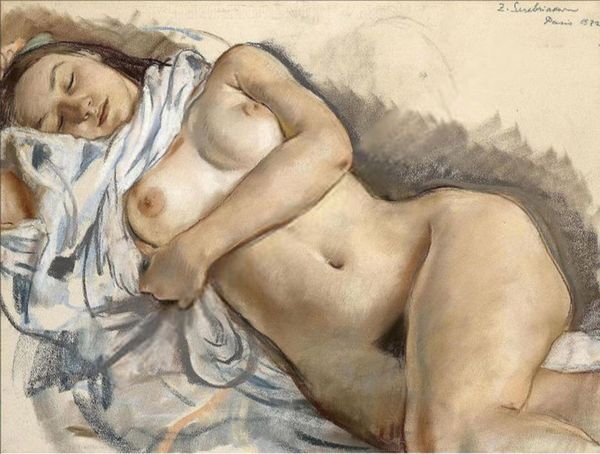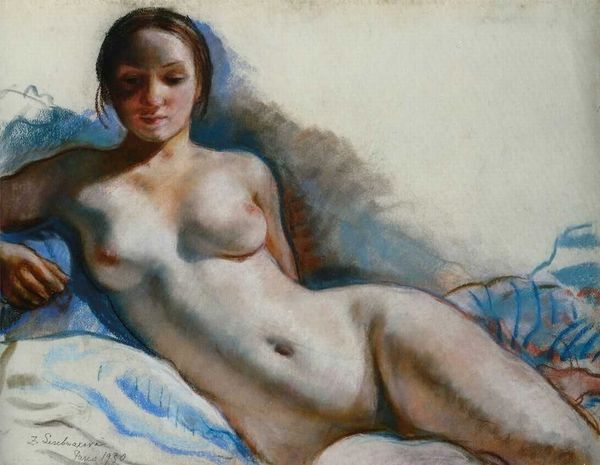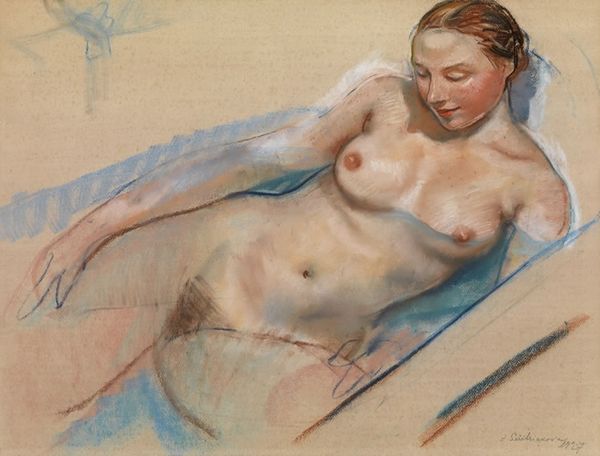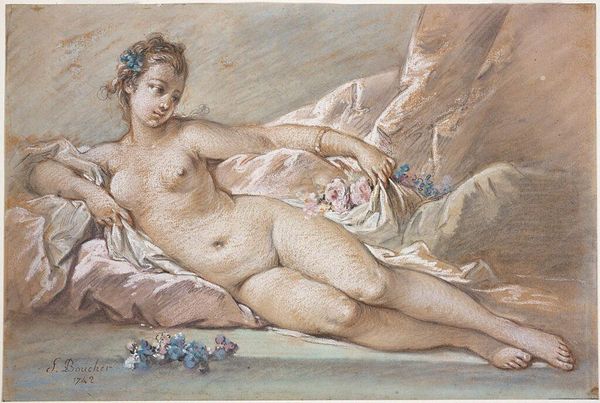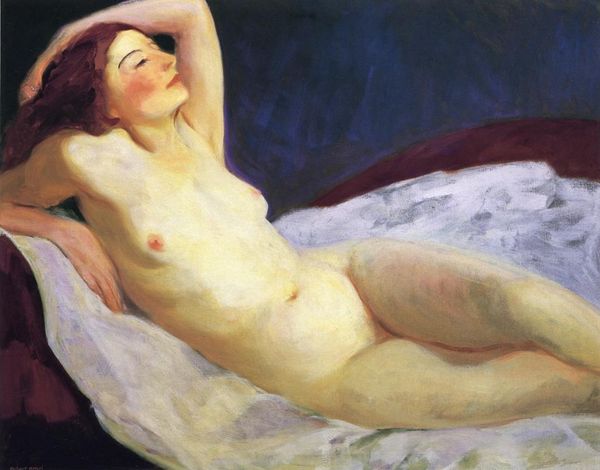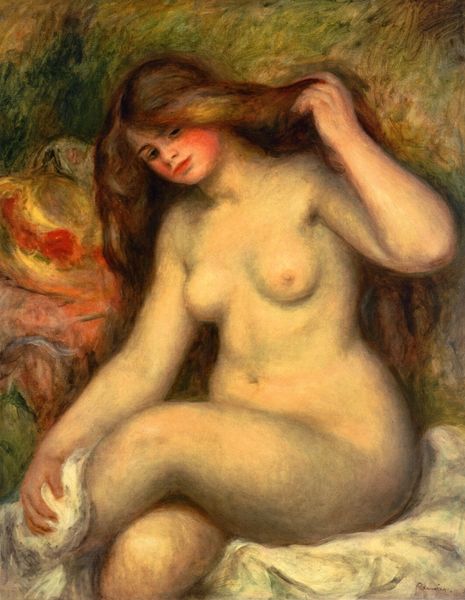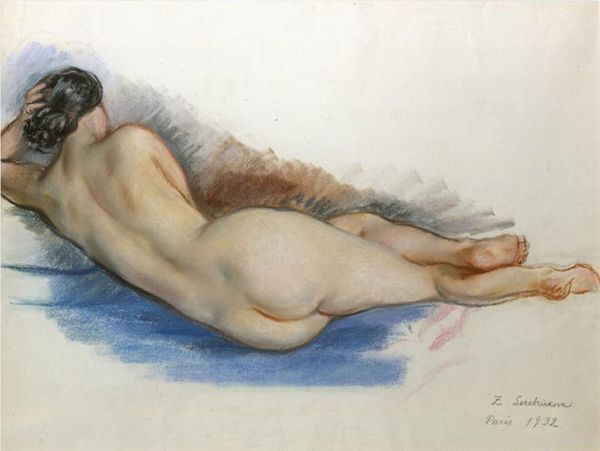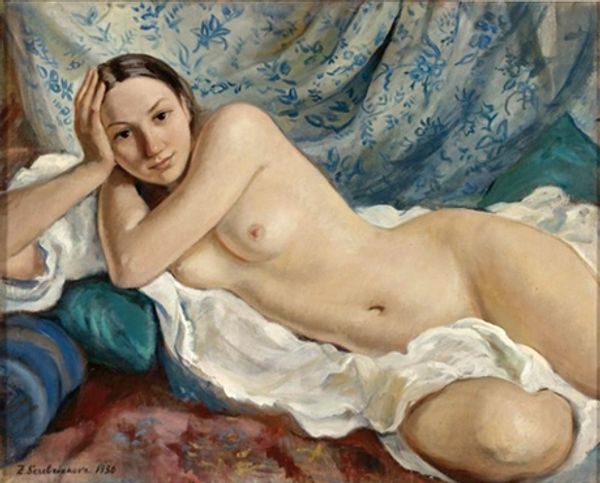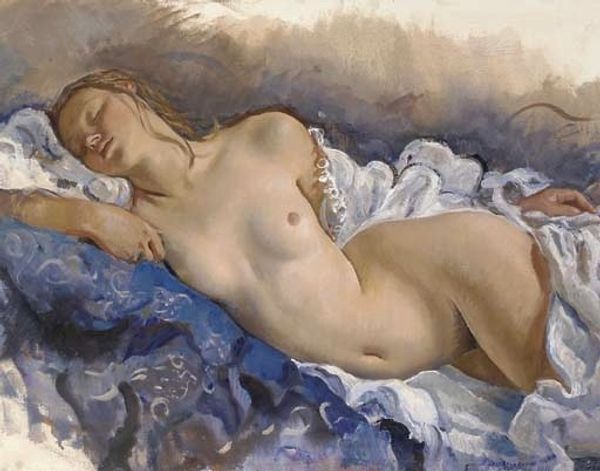
Copyright: Zinaida Serebriakova,Fair Use
Editor: Zinaida Serebriakova's "Reclining Nude with Cherry Mantle," created in 1934 with oil paint, has such a soft and intimate feel. What do you see in this piece, and how might we interpret it beyond just a beautiful nude? Curator: The piece is seductive, yes, but let's consider Serebriakova's position as a woman artist navigating the male gaze, even if not explicitly present. In the early 20th century, the nude, a historically male-dominated genre, began to see challenges. Does this depiction subvert the objectification traditionally associated with nudes? The relaxed pose, her eyes closed...does that denote vulnerability or empowerment? Editor: That's interesting! I hadn't thought about it in terms of subversion. So, the way she's presented – seemingly at ease, eyes closed – could be a conscious artistic choice? Curator: Exactly. Consider also the historical context of women in art during this period, often confined to specific genres or roles. This work challenges those limitations. The "cherry mantle" isn't simply decoration; it’s symbolic. Perhaps an intimate token, casually placed and evocative, creating its own narrative about sensuality and possession. How do you feel about the palette that she employs? Does the tonality create another kind of emotional framework? Editor: I can see that. The colour is very soft and romantic, a feminine romanticism which gives a feel of longing or dreaminess rather than pure flesh. Curator: The choice of colour is also not separate from that tradition; women throughout art history have used colour to subtly signify their individual approach to established subjects, a quiet language within. Do you see that impacting you in the way the nude is typically presented in art? Editor: Absolutely! Looking at it now, it feels like I've peeled back a layer of complexity that I hadn't noticed at first glance. I will bring those observations into my term paper! Curator: That’s wonderful. By engaging with those critical frameworks we move beyond appreciation to analysis, from beauty to context.
Comments
No comments
Be the first to comment and join the conversation on the ultimate creative platform.
